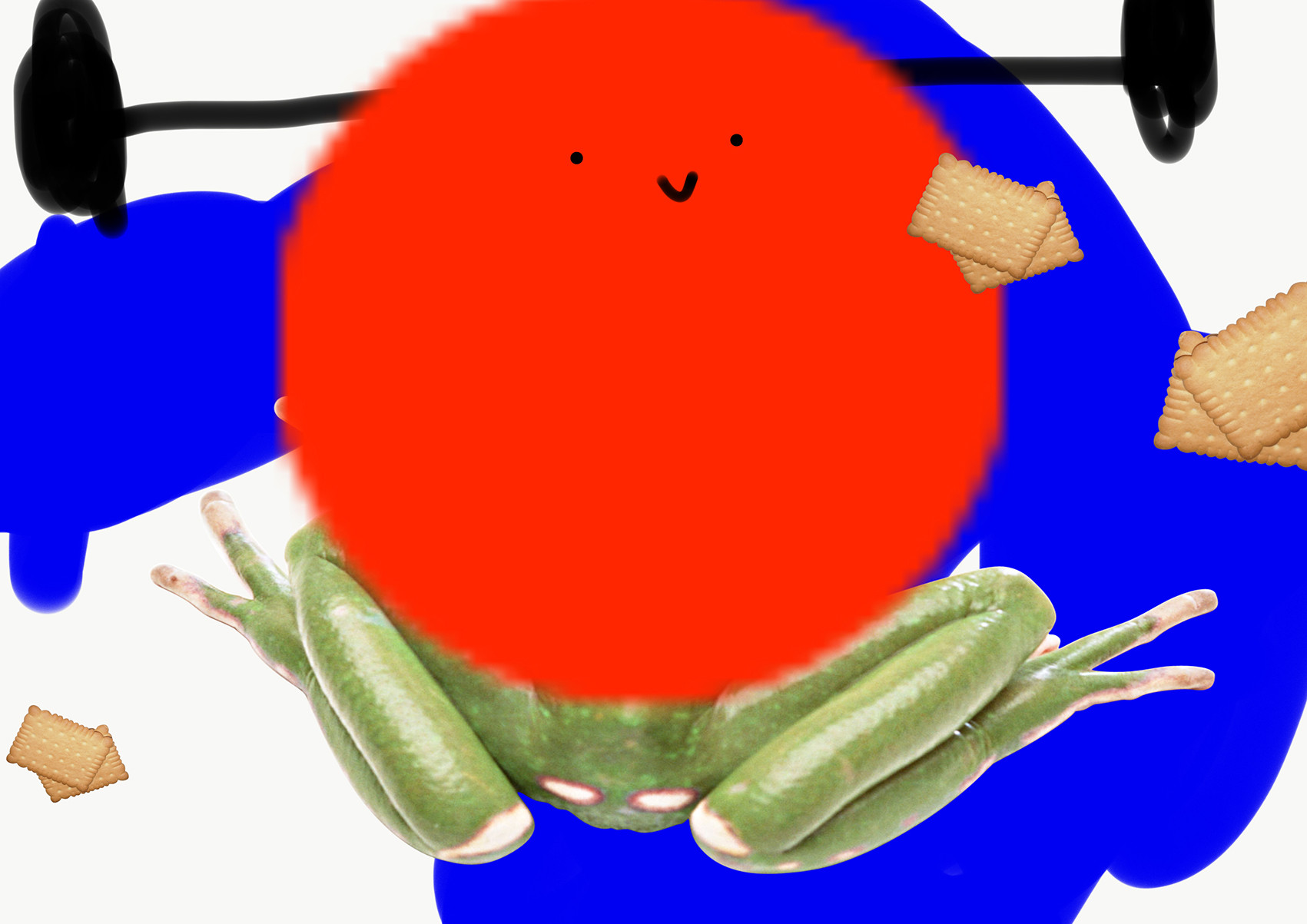Nata Yanchur: AVANT-GARDE SCHIZOPHRENIC FARCE
Author: Tara Tarabtseva, artist, art manager, author of texts on contemporary art

In 2002, David Lynch released a short web movie with elements of a sitcom — Rabbits. The eight episodes feature an avant-garde schizophrenic farce with elements of classic sitcom laws. Rabbits is accompanied by lurid credits: “In a nameless city deluged by a continuous rain… three rabbits live with a fearful mystery.”
Except that the series can“t please or comfort the viewer. It”s impossible to watch it indifferently, but it’s also impossible to tear yourself away.
You can experience something similar by immersing yourself in Nata Yanchur’s works.

The artist creates dozens of hundreds of images that resemble (and actually refer to) postcards, jokes and memes, but are deprived of any visual or textual narrative. If you try to retell any of the works, you will get practically a retelling of Lynch“s Rabbits — a pink dragon sits on the couch, it is crossed out with a black line and a few red stripes on the left. Often in Nata”s works it is impossible to guess even the origin of the textures used. And if the viewer guesses something in one work, in the next one Nata meticulously transforms the images, denying them their original meaning and not creating a new one. And this lack of it is the method. Textures remain textures with all the transformations, without acquiring additional or witty new meaning, as often happens in the works of postmodernists. Each time it is a puzzle with multiple meanings, the correctness of which cannot be verified.

In digital variations of the Endless Exhibition series, Nata Yanchur multiplies images as if a Potterian spell of multiplication had been cast on them, creating a copy of the original object. Emphasizing the productive possibilities of digital works, Nata points out that the work in this medium is limited only by the artist’s ability and imagination. Here each individual work has its own aesthetic and artistic value. But in a series, becoming part of a series — being in a cluster of masses of similar ones, another perception of the artistic image is born. The newly formed mass becomes a new work.


The 3D series is a double trick. First, the unsuspecting viewer searches for the meaning and plot of the work seen, but, of course, there is none. And the second time the viewer is deceived when the image begins to rotate and the flip side becomes visible — the volumetric elements change the picture, a new plot twist is about to appear. Misfire. It’s nonsensical and farcical again. The image rotates and you look at it again and again, puzzled and frustrated.

Nata insists that you should not look for narrative meaning in her works — these are aesthetic things, here it is important to see the composition, the purity of picturesque without the heavy burden of classical painting. The artist deftly stays at the very edge of the design frontier and shows the full palette of the digital artistic tools, using digital graphics as a medium.

Exploring the boundaries of what is possible, Nata develops a series of works in one direction or another. There are works with a minimal set of lines and stains and over-saturated textures and shapes. Arranging the works in a row, the viewer tries to see the logic of consistency.

In fact, as with Lynch in Rabbits, when the viewer waits for the dialogue of the main characters to give clues and clarify something. This clarity does not come, but the viewer (in both cases) feels that the author behind the creation of the work knows exactly what he is doing. In all this apparent farce, there may be no sense, but there is certainly a precision and loyalty to the technique.

And time after time the viewer is waiting for the next episode of the eight-minute series or looking for a bright spot of colour in the group exhibition of the Red Circle (the artist is a past-member of Avdei Ter-Oganyan Art Association). Whether it is a mural of flowing abstraction spread over several halls of the New Building of the Gogol House — The Red Circle’s Passing Exhibition, or a deliberately crumpled poster at the Funny Exhibition at the Fabrica Creative Art Center.
Nata Yanchur (female), born in 1990 in Minsk, Belarus. She has degree in Art from the Faculty of Contemporary Art, High School “Sreda Obuchenia”, has Bachelor degree of history and social sciences, Belarusian State University. She participated in the numerous international projects and exhibitions in the field of contemporary art. The sphere of her professional interests is visual arts: painting, drawing, digital art.
https://www.instagram.com/nata00yanch/
